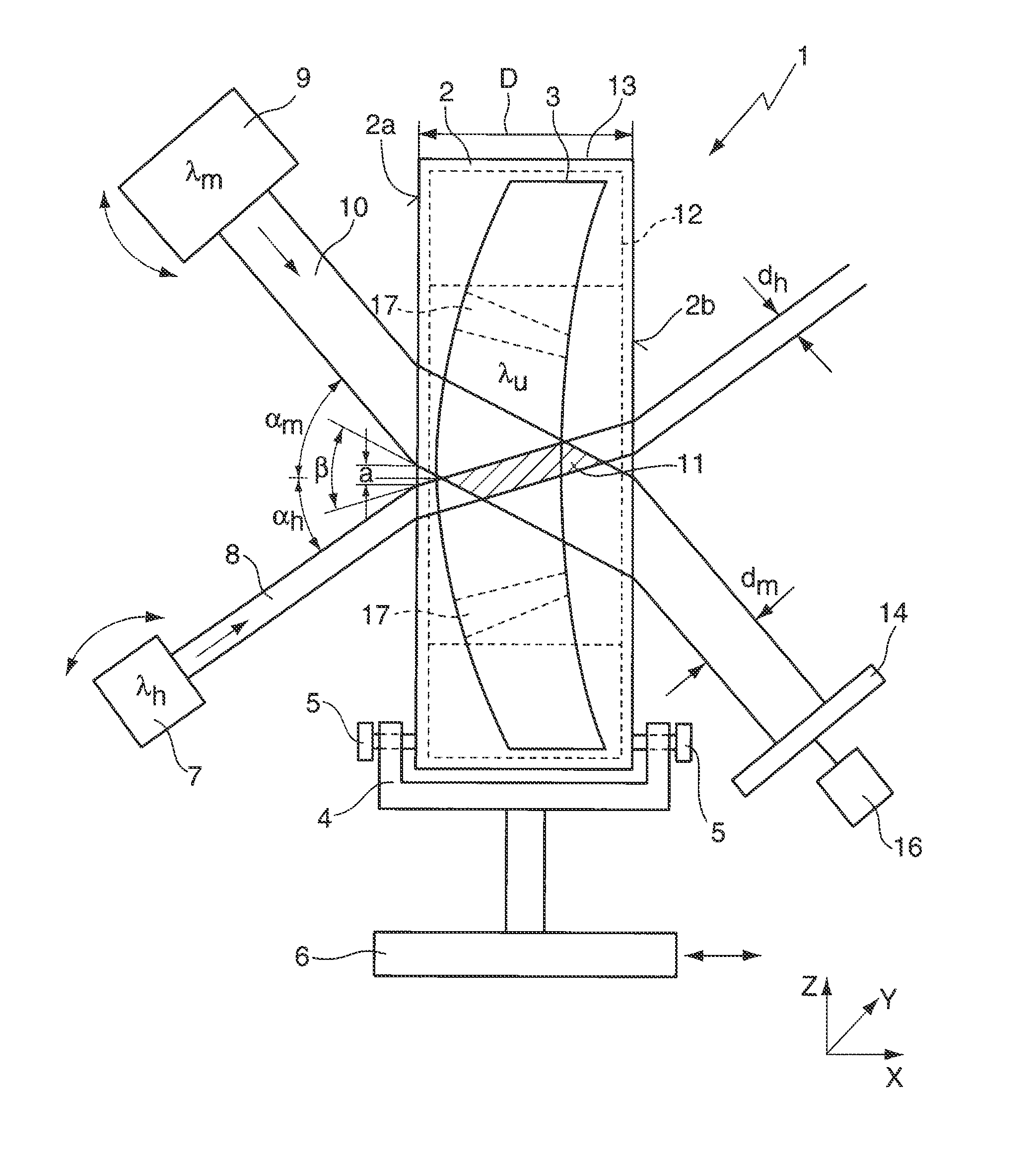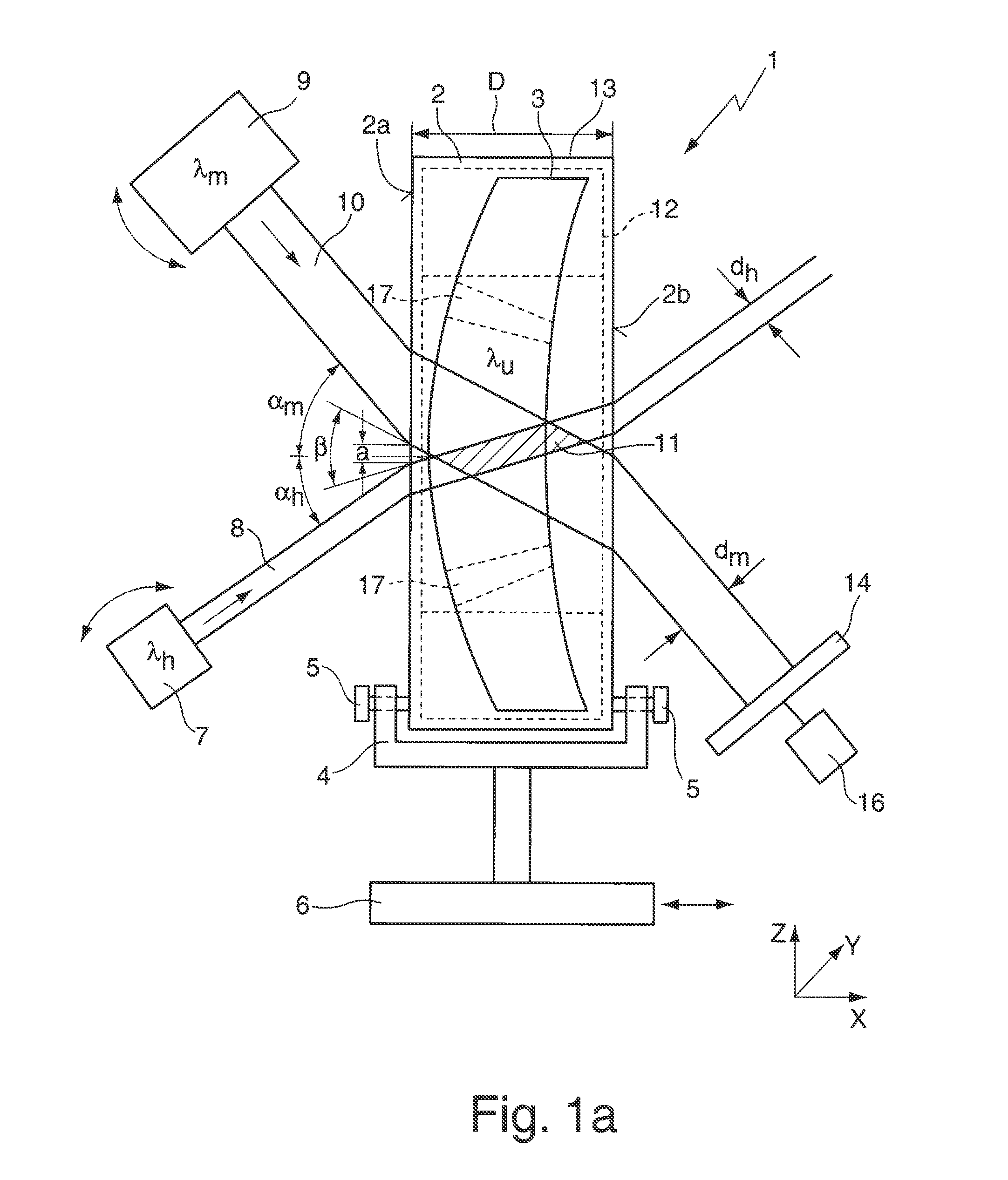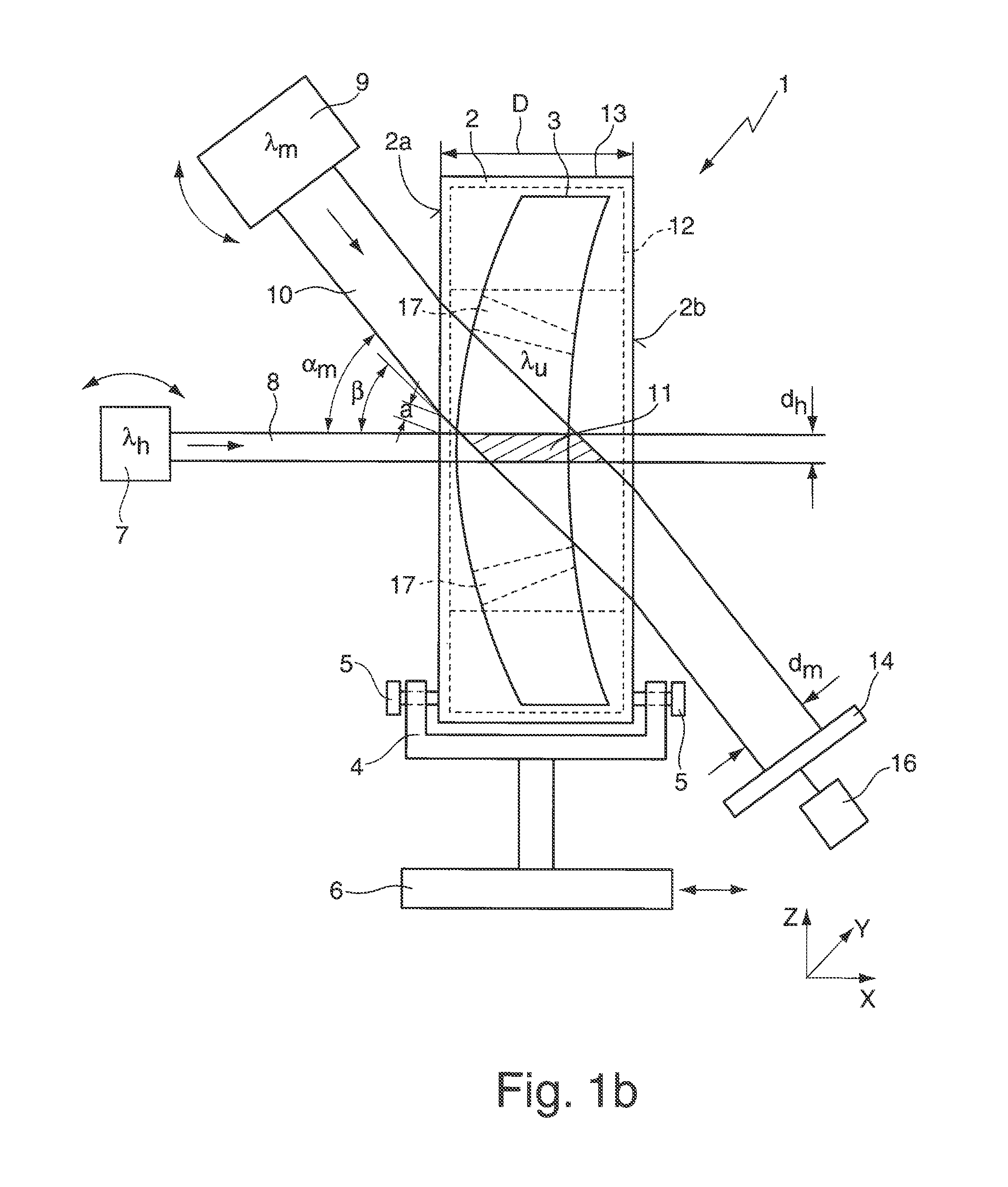Method and apparatus for determining the absorption in a blank
- Summary
- Abstract
- Description
- Claims
- Application Information
AI Technical Summary
Benefits of technology
Problems solved by technology
Method used
Image
Examples
Embodiment Construction
[0055]FIG. 1a schematically illustrates an apparatus 1 for determining the absorption of a blank 2 for producing an optical element 3. Said apparatus has a holding device 4 (sample holder) for the blank 2, on which the latter is mounted in an upright fashion and fixed with the aid of adjusting screws 5. The end faces 2a, 2b of the cylindrical blank 2 are provided with a visible polish, i.e. the end faces 2a, 2b have a residual roughness having a polishing quality in the range of the polishing class P1 or P2. The sample holder 4 is arranged on a displacing table 6, which, with the aid of linear drives, enables a displacement—indicated by a double-headed arrow—of the blank 2 in three axial directions X, Y, Z perpendicular to one another. It goes without saying that the apparatus 1 can, if appropriate, also be used for measuring a ground and polished optical element 3.
[0056]The apparatus 1 furthermore has a heating light source 7 for generating a (collimated) heating light ray 8 for he...
PUM
 Login to View More
Login to View More Abstract
Description
Claims
Application Information
 Login to View More
Login to View More - R&D
- Intellectual Property
- Life Sciences
- Materials
- Tech Scout
- Unparalleled Data Quality
- Higher Quality Content
- 60% Fewer Hallucinations
Browse by: Latest US Patents, China's latest patents, Technical Efficacy Thesaurus, Application Domain, Technology Topic, Popular Technical Reports.
© 2025 PatSnap. All rights reserved.Legal|Privacy policy|Modern Slavery Act Transparency Statement|Sitemap|About US| Contact US: help@patsnap.com



